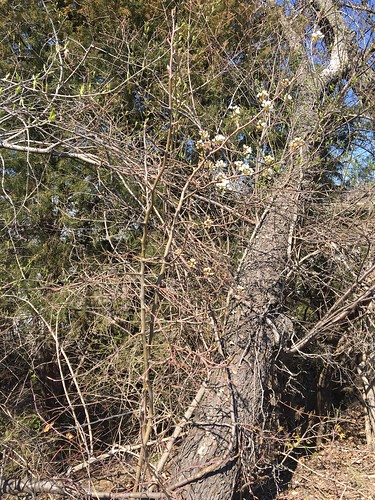Ultrasonicator. Sheared DNA was purified and used for Illumina library construction making use of the KAPA Hyper Prep kit (KK, Kapa Biosystems). Sequencing libraries had been quantified using an Agilent Bioanalyzer . Sequencing was carried out on the Illumina HiSeq platform (Illumina, San Diego, CA, USA). SMS libraries from situations and controls have been grouped into distinct pools PubMed ID:https://www.ncbi.nlm.nih.gov/pubmed/28506293 (individualspool). Each and every pool yielded an typical of million bp, pairedend reads (mean Gb of sequence information per sample; median Gb). Raw SMS data have been preprocessed using prinseq (v) for finish trimming and filtered to exclude lowquality and lowcomplexity reads. Adaptor sequences were removed utilizing cutadapt (v ). Human sequences were subtracted in the dataset utilizing bowtie (v) and working with genomic, mitochondrial, and ribosomal sequences downloaded from NCBI. Bacterial composition (relative abundance) was obtained from raw sequencing data employing Metaphlan (v) computer software and processed by Qiime (v.). To evaluate general microbiome variations, we used principal coordinate analysis depending on the BrayCurtis dissimilarity metric. Metabolic pathway evaluation was carried out on hostsubtracted sequences working with Humann (v) software program.Immune profiling analyseshuman control plasma samples . Imply fluorescence intensities of analytespecific immunoassay bead sets have been detected by flowbased LuminexTM suspension array method (Luminex Corporation, Austin, TX) . Cytokine concentrations had been calculated by  xPONENT (make .) and Milliplex AnalystTM software (v) working with a normal curve derived from recognized reference concentrations supplied by the manufacturer. A fiveparameter model was employed to calculate final concentrations by interpolation. Va
xPONENT (make .) and Milliplex AnalystTM software (v) working with a normal curve derived from recognized reference concentrations supplied by the manufacturer. A fiveparameter model was employed to calculate final concentrations by interpolation. Va
lues are expressed in pgml. Concentrations obtained below the sensitivity limit of detection (LOD) in the method were recoded towards the midpoint amongst zero and also the LOD for that analyte for statistical comparisons. Values obtained from reading of samples that exceeded the upper limit from the sensitivity strategy had been further diluted and cytokine concentrations calculated accordingly. Feature scaling (information normalization) was utilized to standardize the array of cytokine values for the MeV heatmap , and logtransformation was applied for network analysis.Topological data analysesA magnetic beadbased plex immunoassay (customized ProcartaTM immunoassay, Affymetrix) was utilised to measure plasma concentrations of immune molecules (Further file Table SA). Case and control plasma samples had been coded, randomized, and run in duplicate as well as serial standards, buffer controls, and inhouseMetagenomic data including bacterial composition and inferred metabolic pathways, plasma immune profiles, and health symptom severity scores have been buy RIP2 kinase inhibitor 2 integrated for topological information analysis (TDA) employing the AYASDI platform (Ayasdi, Menlo Park, California). AYASDI represents highdimensional, complex biological information sets as a structured dimensional network . Each node MedChemExpress SB-366791 within the network comprises a single or a  lot more subject(s) who share variables in numerous dimensions. Lines connect network nodes that include shared information points. As opposed to classic network models exactly where a single sample tends to make a single node, the size of a node inside the topological network was proportional to the number of variables having a related profile. We constructed a network comprised of samples and variables (variables representing bacterial relative abundance at different taxonomic levels, variables reflecting levels of each and every immune molecule in the assay, variables repre.Ultrasonicator. Sheared DNA was purified and applied for Illumina library building making use of the KAPA Hyper Prep kit (KK, Kapa Biosystems). Sequencing libraries were quantified working with an Agilent Bioanalyzer . Sequencing was carried out on the Illumina HiSeq platform (Illumina, San Diego, CA, USA). SMS libraries from instances and controls have been grouped into various pools PubMed ID:https://www.ncbi.nlm.nih.gov/pubmed/28506293 (individualspool). Each and every pool yielded an average of million bp, pairedend reads (mean Gb of sequence information per sample; median Gb). Raw SMS information have been preprocessed employing prinseq (v) for finish trimming and filtered to exclude lowquality and lowcomplexity reads. Adaptor sequences have been removed utilizing cutadapt (v ). Human sequences have been subtracted from the dataset utilizing bowtie (v) and utilizing genomic, mitochondrial, and ribosomal sequences downloaded from NCBI. Bacterial composition (relative abundance) was obtained from raw sequencing data employing Metaphlan (v) application and processed by Qiime (v.). To evaluate overall microbiome differences, we employed principal coordinate evaluation depending on the BrayCurtis dissimilarity metric. Metabolic pathway analysis was carried out on hostsubtracted sequences making use of Humann (v) computer software.Immune profiling analyseshuman control plasma samples . Imply fluorescence intensities of analytespecific immunoassay bead sets had been detected by flowbased LuminexTM suspension array system (Luminex Corporation, Austin, TX) . Cytokine concentrations have been calculated by xPONENT (make .) and Milliplex AnalystTM application (v) applying a standard curve derived from identified reference concentrations supplied by the manufacturer. A fiveparameter model was utilised to calculate final concentrations by interpolation. Va
lot more subject(s) who share variables in numerous dimensions. Lines connect network nodes that include shared information points. As opposed to classic network models exactly where a single sample tends to make a single node, the size of a node inside the topological network was proportional to the number of variables having a related profile. We constructed a network comprised of samples and variables (variables representing bacterial relative abundance at different taxonomic levels, variables reflecting levels of each and every immune molecule in the assay, variables repre.Ultrasonicator. Sheared DNA was purified and applied for Illumina library building making use of the KAPA Hyper Prep kit (KK, Kapa Biosystems). Sequencing libraries were quantified working with an Agilent Bioanalyzer . Sequencing was carried out on the Illumina HiSeq platform (Illumina, San Diego, CA, USA). SMS libraries from instances and controls have been grouped into various pools PubMed ID:https://www.ncbi.nlm.nih.gov/pubmed/28506293 (individualspool). Each and every pool yielded an average of million bp, pairedend reads (mean Gb of sequence information per sample; median Gb). Raw SMS information have been preprocessed employing prinseq (v) for finish trimming and filtered to exclude lowquality and lowcomplexity reads. Adaptor sequences have been removed utilizing cutadapt (v ). Human sequences have been subtracted from the dataset utilizing bowtie (v) and utilizing genomic, mitochondrial, and ribosomal sequences downloaded from NCBI. Bacterial composition (relative abundance) was obtained from raw sequencing data employing Metaphlan (v) application and processed by Qiime (v.). To evaluate overall microbiome differences, we employed principal coordinate evaluation depending on the BrayCurtis dissimilarity metric. Metabolic pathway analysis was carried out on hostsubtracted sequences making use of Humann (v) computer software.Immune profiling analyseshuman control plasma samples . Imply fluorescence intensities of analytespecific immunoassay bead sets had been detected by flowbased LuminexTM suspension array system (Luminex Corporation, Austin, TX) . Cytokine concentrations have been calculated by xPONENT (make .) and Milliplex AnalystTM application (v) applying a standard curve derived from identified reference concentrations supplied by the manufacturer. A fiveparameter model was utilised to calculate final concentrations by interpolation. Va
lues are expressed in pgml. Concentrations obtained under the sensitivity limit of detection (LOD) in the strategy had been recoded for the midpoint involving zero and the LOD for that analyte for statistical comparisons. Values obtained from reading of samples that exceeded the upper limit of your sensitivity approach had been further diluted and cytokine concentrations calculated accordingly. Feature scaling (information normalization) was made use of to standardize the range of cytokine values for the MeV heatmap , and logtransformation was applied for network evaluation.Topological data analysesA magnetic beadbased plex immunoassay (customized ProcartaTM immunoassay, Affymetrix) was employed to measure plasma concentrations of immune molecules (Added file Table SA). Case and control plasma samples have been coded, randomized, and run in duplicate in addition to serial standards, buffer controls, and inhouseMetagenomic data such as bacterial composition and inferred metabolic pathways, plasma immune profiles, and health symptom severity scores had been integrated for topological information evaluation (TDA) working with the AYASDI platform (Ayasdi, Menlo Park, California). AYASDI represents highdimensional, complex biological information sets as a structured dimensional network . Each node inside the network comprises one or much more topic(s) who share variables in multiple dimensions. Lines connect network nodes that include shared data points. Unlike standard network models exactly where a single sample makes a single node, the size of a node within the topological network was proportional to the number of variables using a related profile. We built a network comprised of samples and variables (variables representing bacterial relative abundance at distinct taxonomic levels, variables reflecting levels of each immune molecule within the assay, variables repre.
